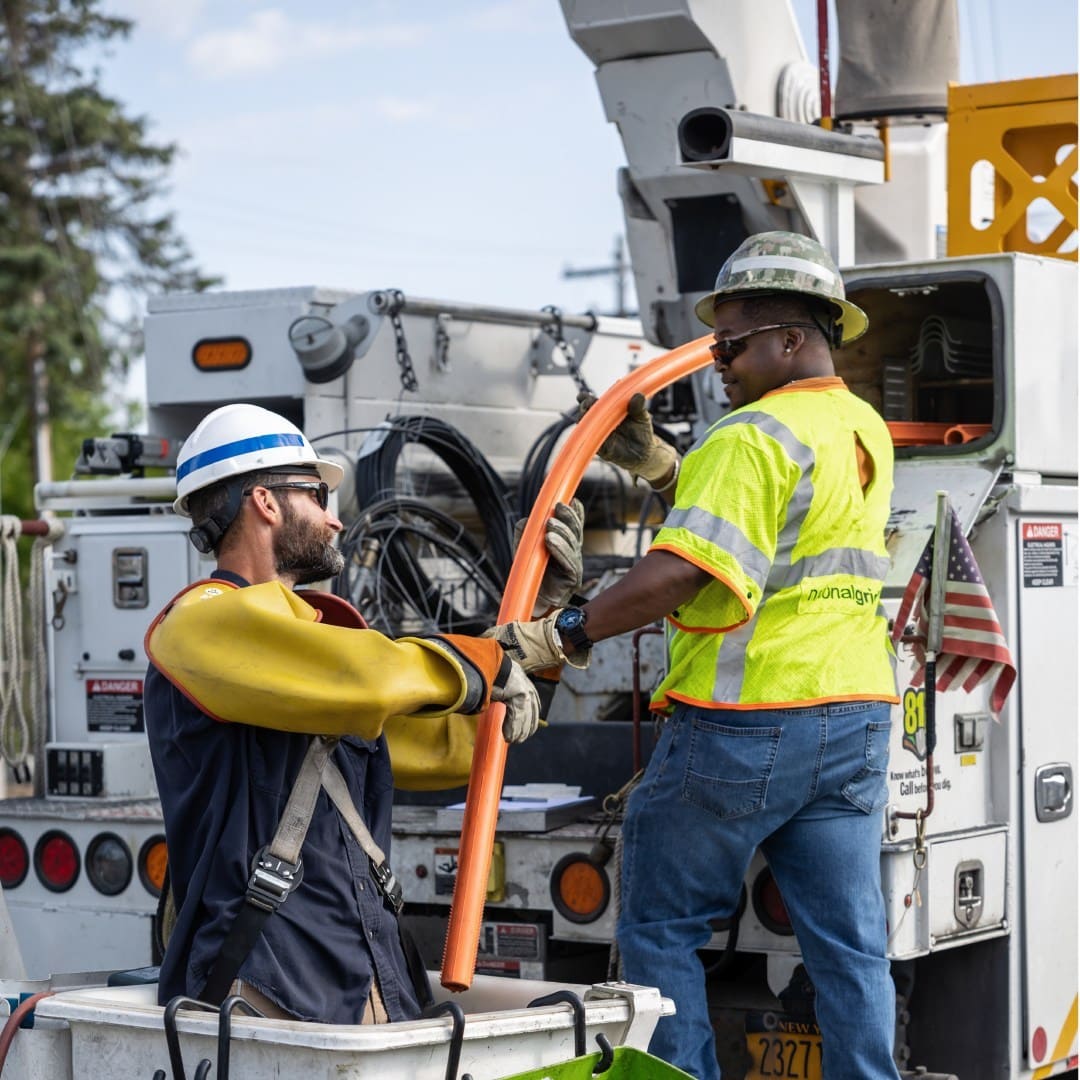The national grid has become the backbone of America’s power infrastructure, playing a vital role in connecting energy producers and consumers. As the demand for reliable, clean, and efficient power continues to rise, the national grid is undergoing a transformative evolution. With cutting-edge technologies and sustainable innovations, it is not just keeping pace with the growing energy needs of the United States—it is leading the charge. This post explores how the national grid is being reimagined through 18 genius strategies that are shaping the future of energy in the USA. These advancements not only promise a more resilient energy network but also reinforce the importance of the national grid in achieving the country’s climate and economic goals.
1. Smart Grid Technology Integration

One of the most transformative developments in the evolution of the national grid is the integration of smart grid technologies. Smart grids leverage digital communication tools and advanced data analytics to enhance the efficiency and reliability of the power network. These intelligent systems allow real-time monitoring and control, providing utilities with precise insights into energy demand and distribution. As a result, the national grid becomes more responsive, adaptable, and capable of self-healing during disruptions. This innovation empowers consumers with better control over their energy use, fostering a more interactive and sustainable grid ecosystem across the USA.
2. Renewable Energy Expansion
The national grid is increasingly accommodating a diverse array of renewable energy sources such as solar, wind, and hydroelectric power. This shift not only helps reduce greenhouse gas emissions but also ensures a more sustainable energy mix. With the grid’s ability to absorb and distribute variable renewable inputs, it plays a crucial role in balancing supply and demand. This dynamic integration is essential for the USA’s clean energy transition, making the national grid a cornerstone of the green revolution.
3. Energy Storage Systems
The deployment of energy storage technologies like lithium-ion batteries and pumped hydro storage enhances the flexibility of the national grid. These systems store excess power generated during low-demand periods and release it when demand spikes. By stabilizing fluctuations in energy production and consumption, energy storage solutions make the grid more reliable and efficient. As these systems become more cost-effective and scalable, their role in modernizing the national grid becomes even more critical.
4. Demand Response Programs
Demand response programs incentivize consumers to adjust their electricity usage during peak periods, thereby reducing strain on the national grid. These programs use smart meters and dynamic pricing to encourage energy conservation and shift consumption patterns. By easing pressure on the grid during high-demand times, demand response initiatives help maintain grid stability and reduce the need for additional power plants. This strategy is gaining traction across the USA, offering a win-win for both utilities and consumers.
5. Grid Decentralization
Traditional power grids relied heavily on centralized energy generation, but the modern national grid is moving toward decentralization. Distributed energy resources (DERs) such as rooftop solar panels, microgrids, and localized wind turbines are becoming integral components of the power landscape. This decentralization reduces transmission losses, enhances grid resilience, and empowers local communities to participate in energy production. By fostering energy independence and diversity, the decentralized national grid is better equipped to meet future challenges.
6. Advanced Metering Infrastructure (AMI)
Advanced metering infrastructure provides detailed insights into electricity consumption by using digital smart meters. These meters transmit usage data to utilities and consumers in real-time, enabling more accurate billing and better demand forecasting. AMI plays a pivotal role in modernizing the national grid, allowing utilities to detect outages quickly and optimize resource allocation. For American households and businesses, this translates to improved service reliability and greater energy awareness.
7. Cybersecurity Enhancements
As the national grid becomes increasingly digitized, cybersecurity becomes a paramount concern. Protecting the grid from cyberattacks and data breaches requires robust security protocols, real-time threat detection, and coordinated response strategies. Federal agencies and utilities are investing heavily in cybersecurity to safeguard critical infrastructure. These proactive measures ensure that the national grid remains secure and resilient, even in the face of evolving cyber threats.
8. Electric Vehicle (EV) Integration
The growing adoption of electric vehicles presents both challenges and opportunities for the national grid. EV charging stations add new demand to the grid, but they also offer potential for energy storage and demand management. Smart charging infrastructure and vehicle-to-grid (V2G) technologies allow EVs to interact with the grid dynamically, serving as mobile storage units during peak times. This symbiotic relationship supports grid stability and enhances the overall efficiency of the energy ecosystem.
9. Grid Automation and AI

Artificial intelligence and automation are revolutionizing grid management by enabling predictive maintenance, real-time analytics, and automated fault detection. These technologies enhance operational efficiency and minimize downtime, making the national grid more resilient and cost-effective. AI-powered tools can forecast demand trends, optimize energy flows, and identify potential vulnerabilities before they escalate into major issues. The integration of automation and AI is a defining feature of the next-generation national grid.
10. Federal and State Policy Support
Government policies and regulatory frameworks play a crucial role in shaping the future of the national grid. Incentives for clean energy adoption, grid modernization grants, and emissions targets are driving investments in grid infrastructure. Collaboration between federal and state agencies ensures that grid enhancements align with broader environmental and economic goals. These policy initiatives lay the foundation for a smarter, more sustainable national grid.
11. Grid Resilience Against Climate Change
Climate change poses significant risks to energy infrastructure, from extreme weather events to rising temperatures. The national grid is being fortified to withstand these challenges through climate-resilient designs, underground power lines, and emergency response systems. Enhancing grid resilience ensures uninterrupted power supply during natural disasters, protecting public safety and economic stability across the USA.
12. Interregional Transmission Projects
Expanding transmission networks across state lines enables the efficient transfer of electricity from regions with surplus generation to areas with high demand. These interregional projects improve grid reliability, reduce congestion, and facilitate the integration of renewable energy. The national grid’s ability to move electricity across vast distances strengthens energy security and promotes nationwide access to clean power.
13. Carbon Capture and Grid Integration
While transitioning to renewables, fossil fuels still play a role in energy generation. Integrating carbon capture technologies into the national grid allows continued use of these resources with reduced environmental impact. Captured carbon can be stored or utilized in industrial processes, supporting emissions reduction goals without compromising energy reliability. This balance is vital as the USA navigates its energy transition.
14. Peer-to-Peer Energy Trading
Emerging blockchain platforms are enabling peer-to-peer energy trading, where consumers can buy and sell electricity directly. This decentralizes power distribution and empowers individuals to participate in the energy market. The national grid supports these transactions through secure, real-time data exchange, fostering a more inclusive and efficient energy ecosystem.
15. Workforce Development and Training
A skilled workforce is essential for managing and upgrading the national grid. Utilities and educational institutions are partnering to develop training programs that equip workers with the knowledge and tools needed to operate advanced grid technologies. These initiatives ensure a talent pipeline that can sustain grid innovation and support the nation’s energy ambitions.
16. Environmental Impact Mitigation
The national grid is adopting practices to reduce its environmental footprint. From using eco-friendly construction materials to implementing wildlife protection measures, every aspect of grid development considers sustainability. Environmental impact assessments and community engagement are integral to these efforts, ensuring responsible grid expansion.
17. Public-Private Partnerships
Collaboration between government entities and private sector companies accelerates grid innovation. These partnerships combine public oversight with private investment and technical expertise, driving the deployment of cutting-edge technologies. The national grid benefits from this synergy, gaining access to resources and knowledge that support long-term modernization.
18. Real-Time Energy Pricing Models

Real-time pricing models allow consumers to adjust their usage based on current energy costs. This promotes efficient energy use and reduces peak demand, easing pressure on the national grid. Advanced pricing tools, enabled by smart grid infrastructure, encourage smarter consumption habits and support a more balanced energy market.
Conclusion: 18 Genius Ways That Define the National Grid’s Future
As this exploration reveals, the national grid is far more than a static network of wires and substations—it is a dynamic, evolving system that is central to America’s energy future. Through smart technologies, renewable integration, decentralization, and innovative partnerships, the national grid is being transformed into a resilient and sustainable backbone for the nation’s power needs.
Each of the 18 genius strategies discussed contributes to a more intelligent, responsive, and eco-friendly grid. These innovations reflect not only technological advancements but also a collective commitment to a better energy future. For the USA, the national grid stands as a powerful symbol of progress, adaptation, and visionary infrastructure. Its ongoing transformation ensures that it remains a reliable and forward-thinking foundation for generations to come.